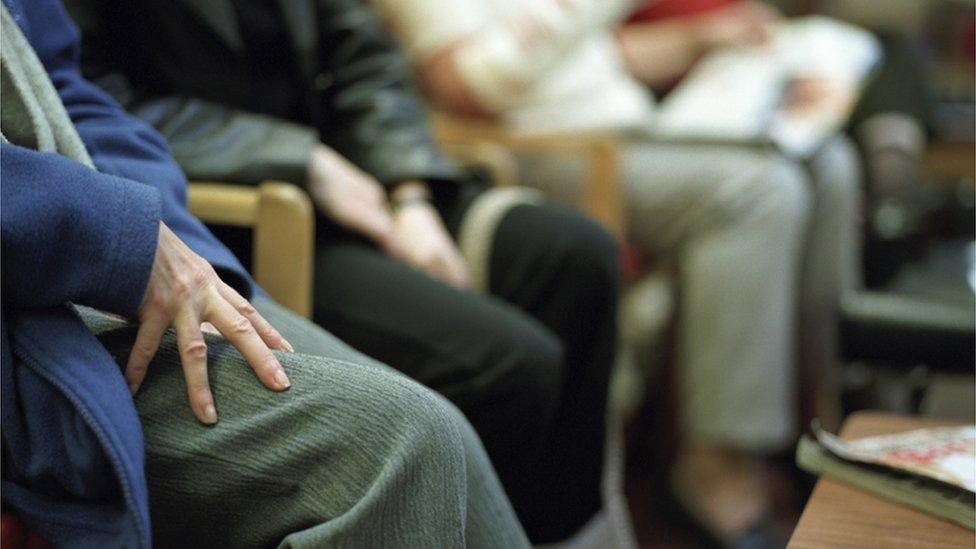NHS treats record patient numbers - how well is it coping?
- Published

As with many stories there are two ways of looking at NHS England's performance figures in March.
Seen through one prism, hospitals were facing record levels of demand for care and coped well in the circumstances. At the same time, all the key NHS performance targets in England were missed, with the A&E figure the worst since records began 12 years ago.
Looking first at the demand side of the equation, it is clear from the data that pressures are increasing relentlessly.
There were more than two million attendances at A&E units in March (though not necessarily that number of patients as some may have gone to hospital more than once) - this was the highest for any month since data was first available in 2010.
Compared to March 2015, this represented an increase of 7.5%.
Over the 2015/16 financial year, there were half a million more patient visits to A&E than in the previous year
It was a similar story for emergency admissions to hospitals, again the highest since modern records began
NHS 111 handled 1.5 million calls in March, up sharply from 1.1 million in March 2015
There were nearly 600,000 emergency calls that resulted in a visit by the ambulance service in March, the highest number since the data was first recorded.
Unfamiliarity
So what is causing the surge in patient numbers? There seem to be no clear and obvious explanations.
Problems with social care have been blamed for delays transferring elderly patients out of hospitals. They are now being blamed for higher numbers arriving at the front door.
For older people being looked after in the home, the care provided by a local council or family may be variable so a referral to A&E may increasingly be a default option.
With GP services highly stretched, some patients at the margin may decide that a visit to A&E is more desirable than a wait for an surgery appointment.
Clinicians in emergency departments report there are rising numbers of people who are not familiar with general practice and how it works. A higher population and older patients living longer and developing more chronic conditions are other familiar factors.
NHS England and the Department of Health understandably argued that the NHS was coping well in the face of record patient volume.
But NHS Providers - which represents hospitals and other trusts in England - said the latest figures revealed "a maxed-out health service struggling under the weight of financial strain and increasing numbers of patients".
The Nuffield Trust thinktank argued that at a time when the NHS was supposed to be pushing through radical changes to the delivery of care, "More people than ever are being admitted to hospital in emergencies. More people than ever are staying in hospital when they shouldn't have to because there are no proper arrangements for them to leave."
Growing consensus
Partly as a consequence of the demand pressures, the supply side of the NHS in England struggled.
The key four hour target for treating or assessing patients in A&E was badly missed again. It was well short of the 95% benchmark, with an outcome of 87.3% in March - the lowest since such records began in 2004.
This was behind Scotland's 93.1%, but ahead of Wales and Northern Ireland.
Key targets for cancer waits and referral to treatment by consultants were missed again, as well as the ambulance performance benchmarks.
There may be disagreement over the precise causes of the increase in patient numbers. But there is a growing consensus amongst health experts that there is a systemic problem which will need time to tackle.
NHS England has transformation plans designed to treat more patients out of hospitals but that is a long term aspiration. Shorter term, the waiting times just seem to keep on rising.
- Published12 May 2016